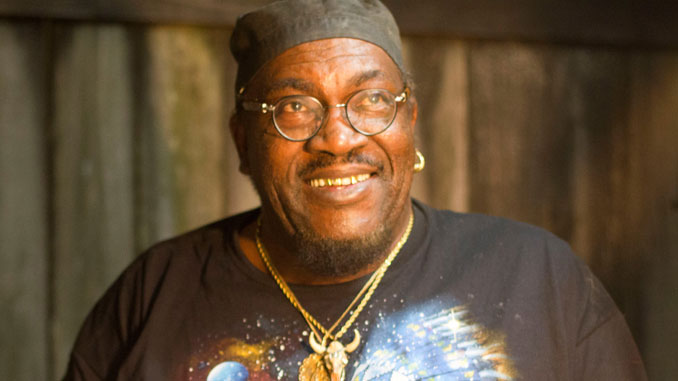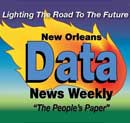
TRIBAL TIMELINE:
2008 – Present – Big Chief Nelson “Mandela Jr.” Lewis
Chief Nelson started masking as a Wildman with no tribe. Chief first saw Black Masking Indians as a child on horseback from the Black Mohawks Tribe that used to come out of Shrewsbury, but now is out of Uptown. “I started carving masks and receiving spirits on how to draw”, along with the spirit of his mother’s sewing. Before the age of 12 he would watch his mom sew as he was honing his skills in mask carving. As Chief says, “she put that spirit in me, in my later years I started sewing”. It seems that the spirits have been guiding Chief Nelson since he was a child. These two accounts of spiritual connectedness are quite unique.
Growing up Nelson watched the Indians in his area sew but did not belong to a tribe. Without receiving instruction on how to decompose a dress or coat to build a suit, he began scavenging for material and came across a baptism robe. The preacher that gave it to him told him one day he would be a Big Chief. At the time, Nelson was confused at the prophecy of the preacher. The second time, Chief was 14 years old and still carving on his own. After carving a few masks, Nelson was told by his sister he should sell them in the French Quarter. There he met a man named Shiloh, that asked if he knew what kind of mask he had carved. Young Nelson replied “no “and the man replied it’s a” Dogon Mask”. “That gave me a spirit” says Chief. After that young Nelson put on that mask and started carving even more. That’s when he got introduced to Big Chief Larry Bannock who asked him to be his Wildman. Again, he was honored but unsure of his ability, but Big Chief Larry knew. That year he would win Wildman of the Year with the Golden Star Hunters Tribe. He black masked with them for 10 years, then his Chief passed away.
Masking since 2008 Black Wolf Hunters are the only tribe to come out of Jefferson Parish. Leading into the 1950’s, Shrewsbury was known as Little Harlem (named after a parks playground gym in Shrewsbury) and was the first location Ray Charles performed in Louisiana. Chief has been the whole gang for Shrewsbury except for, as he says, “everything but the Big Queen”!
Big Chief’s grandmother was full blooded Chahta Indian, and he lives in the house his family built over 80 years ago. Chief says “It’s natural for me, I was born an Indian, I have Indian blood in me. I have that desire. All that you see in here is based on the culture of an Indian. That’s my culture, that is my calling that is why I do what I do. If you don’t have that spirit in you, you will not be able to do this. When you are masking you must have that spirit and the strength in you. If you don’t have the strength in you, you won’t pick up that needle because that needle will make you put it down. Once you start putting that thing in your finger, there’s is no thimble on your finger if you a true Indian. You got to feel it, you got to want it and you must have that desire to make it. There are no weak Chiefs’ out there.”
Q) Chief what is your opinion of beading the red man or the Black man in the designs on the suits?
A) Let me tell you something about my feelings and view of the red man. If you go and look at them, and they will tell you Indians came in all types of colors. Not only red, not only brown, not only bright. But I don’t know if you ever saw the head of the five-dollar Indian? That five-dollar Indian was no Indian. What he did was stop the Dark skin Indian from getting his money, he started signing papers saying, “hey give me some land too, I’m an Indian”. The dark skin Indian could not get what he deserved because they said, “you are mixed with African” and that was not so. That was not so. That stopped us from getting the land we deserved, and it hurts.
Q) What has this culture done for you?
A) it gave me a perspective of what my identity was. It made me feel, I could have peace in myself. To know who I am, what type of person I am. Why I do this here, also gave me the strength to pass it on to the younger generation. That’s something that everybody should know about, is how to identify yourself. To know who you are what you are. I feel good by doing this, there is a lot of time put into this. To have the type of spirit I have, it’s a good thing it’s a good feeling.
Q) What is one thing you want people to know about this Black Masking Culture.
A) Everybody should know that we all not African! And, that this was our land, basically people believe we all came from Africa and that’s not the truth.
Q) What is your hope for the future of this culture and our community as a whole?
A) As a group of people, I think we should come together a little bit more. And, find out which way we can communicate with each other for us to be successful as a race of people. We been on a trail of tears for so long.
Q) In the next 300-year celebration, what do you want the legacy of the Black Wolf Hunters to be?
A) He was a hell of a man, he was just like Geronimo and Cochise, he was legend to be.
Recommended For You.



Be the first to comment